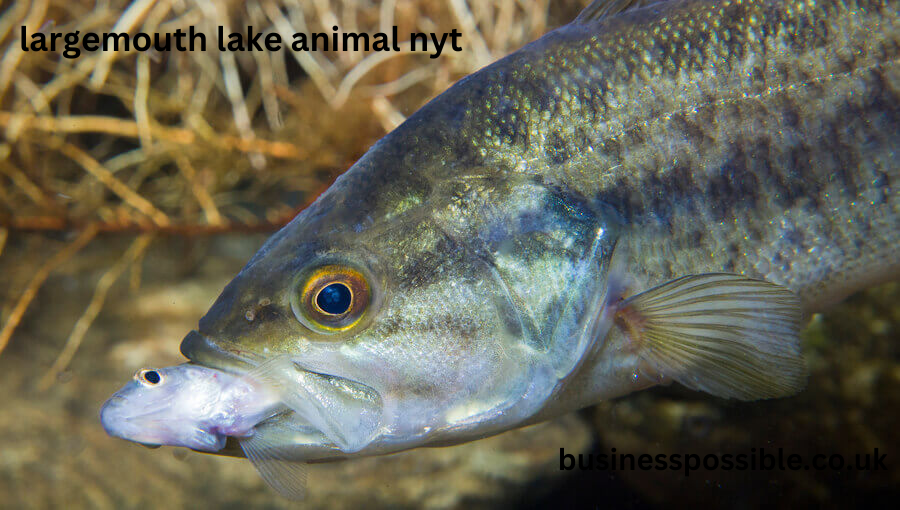Introduction
Have you ever wondered about the fascinating creatures that inhabit our lakes? The term “Largemouth Lake Animal” might pique your curiosity. In this article, we’ll explore what this term refers to, focusing particularly on the largemouth bass, a key species often highlighted in The New York Times (NYT). We’ll delve into its significance, the ecological impact, and the role of media in promoting awareness and conservation.
What is the Largemouth Lake Animal?
The term “Largemouth Lake Animal” primarily refers to the largemouth bass, a prominent fish species found in many freshwater lakes. Known for its large mouth and predatory nature, the largemouth bass is a staple of freshwater fishing and an important part of lake ecosystems. Its historical and ecological significance makes it a frequent subject in environmental reporting.
The Largemouth Bass: A Key Species
The largemouth bass (Micropterus salmoides) is a species native to North America. Characterized by its broad, gaping mouth, it preys on smaller fish and invertebrates, making it a crucial predator in its habitat. This species thrives in various freshwater environments, including lakes, rivers, and ponds. Its adaptability and popularity in recreational fishing underscore its importance to both ecosystems and human activities.
The Significance of Largemouth Lake
Largemouth Lake, as a representative example, provides a habitat for a diverse array of wildlife. The lake’s unique ecological characteristics support not only largemouth bass but also other species, contributing to a balanced and healthy ecosystem. Understanding the dynamics of such lakes helps in appreciating their role in biodiversity and environmental health.
Coverage of Largemouth Lake Animal in NYT
The New York Times frequently covers topics related to wildlife and environmental conservation. Articles featuring the largemouth bass often focus on its role in ecosystems, conservation challenges, and the impact of human activities. Analyzing NYT’s coverage helps us understand how media highlights environmental issues and promotes awareness.
Impact of Largemouth Bass on Local Wildlife
Largemouth bass play a pivotal role in their habitats. As apex predators, they influence the populations of smaller fish and aquatic invertebrates. Their presence helps maintain ecological balance, but changes in their population can have cascading effects on other species and the overall health of the lake ecosystem.
Conservation Efforts and Challenges
Conserving largemouth bass and their habitats involves various strategies, from habitat protection to regulated fishing practices. Challenges include habitat destruction, pollution, and climate change. Effective conservation efforts are crucial for maintaining the health of both the fish and their ecosystems.
The Role of NYT in Environmental Awareness
The New York Times contributes significantly to environmental awareness through its reporting. By covering issues related to the largemouth bass and its habitat, NYT educates the public about conservation needs and environmental policies. Notable articles often highlight the interplay between human activities and wildlife, fostering greater public understanding.
The Broader Impact of Largemouth Bass Studies
Research on largemouth bass extends beyond understanding one species. Studies provide insights into aquatic ecosystems, inform conservation practices, and contribute to broader ecological knowledge. Findings about largemouth bass can also have implications for other species and environmental management strategies.
Comparing Largemouth Bass to Other Species
While the largemouth bass is a notable species, it’s useful to compare it with other lake-dwelling animals. Differences in behavior, diet, and ecological roles can offer a broader perspective on lake ecosystems. Such comparisons help in understanding the unique attributes of the largemouth bass.
Public Interest and Education
Media coverage, such as that provided by NYT, plays a key role in educating the public about environmental issues. Engaging articles and reports can raise awareness, inspire action, and foster a greater appreciation for wildlife and conservation efforts.
Future of Largemouth Bass and Its Habitat
Looking ahead, the future of the largemouth bass and its habitat depends on ongoing conservation efforts and environmental management. Predictions include potential changes in population dynamics due to climate change and habitat alterations. Research and proactive measures will be essential for ensuring the species’ continued survival.
Reader Engagement and Feedback
Reader engagement with environmental topics is vital for driving change. NYT’s interaction with readers through comments, letters, and feedback helps gauge public interest and concerns, influencing future coverage and conservation initiatives.
Conclusion
In conclusion, the largemouth bass, often referred to as the “Largemouth Lake Animal,” plays a crucial role in freshwater ecosystems. The New York Times provides valuable coverage on this topic, highlighting its significance, conservation needs, and the broader impact of environmental issues. By understanding and engaging with such coverage, we can contribute to the preservation of our natural world.
FAQs
What is the largemouth bass?
The largemouth bass is a freshwater fish known for its large mouth and predatory nature, native to North America.
Why is Largemouth Lake important?
Largemouth Lake supports a diverse range of wildlife, including the largemouth bass, contributing to a balanced ecosystem.
How does NYT cover largemouth bass?
NYT articles often focus on the ecological role of the largemouth bass, conservation challenges, and environmental impacts.
What are some conservation challenges for largemouth bass?
Challenges include habitat destruction, pollution, and climate change affecting their populations and habitats.
How can media influence environmental awareness?
Media coverage, such as NYT’s, educates the public about environmental issues, fosters awareness, and encourages conservation efforts.
